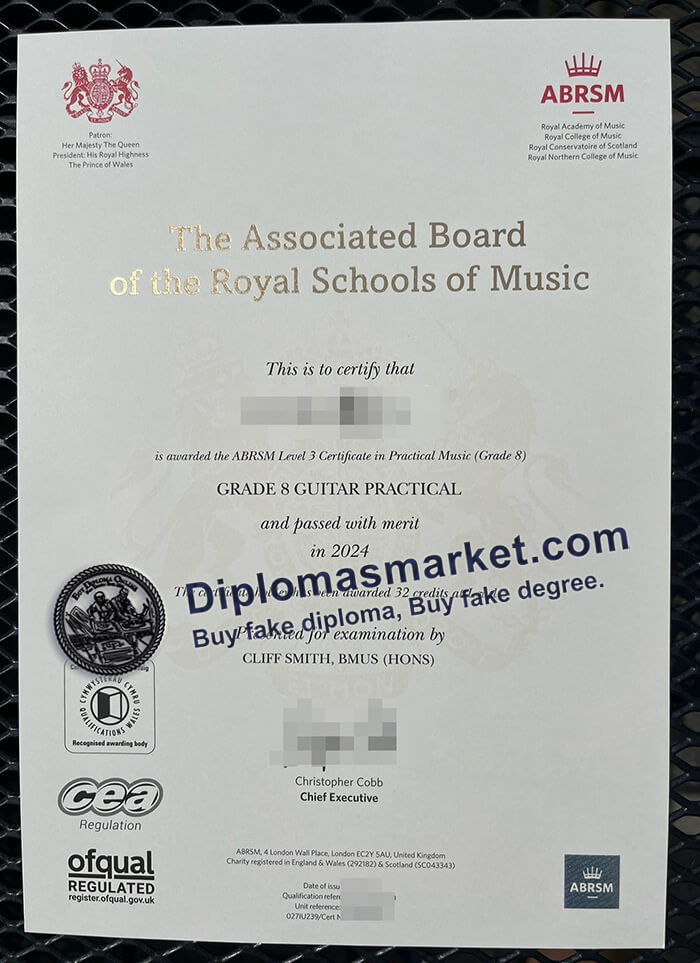
order a ABRSM certificate
The ABRSM (Associated Board of the Royal Schools of Music) is an examination board and registered charity based in the United Kingdom. How to obtain replicate ABRSM certificate? Create ABRSM diploma certificate. ABRSM is one of five examination boards accredited by Ofqual to award graded exams and diploma qualifications in music within the UK’s National Qualifications Framework (along with the London College of Music, RSL Awards (Rockschool Ltd), Trinity College London, and the Music Teachers’ Board). ‘The Associated Board of the Royal Schools of Music’ was established in 1889[3] and rebranded as ABRSM in 2009. The clarifying strapline “the exam board of the Royal Schools of Music” was introduced in 2012.
Music exams are divided into levels 1-8 from easy to difficult. Beginners who are just starting out can take simple tests as a warm-up for the level exam; if candidates want to continue to move towards the professional level, they can take the advanced certificate and DIPASRSM, LRSM, FRSM professional diploma exams after level 8. Buy fake ABRSM degree, Buy fake ABRSM diploma in UK. Holding these professional diplomas is equivalent to the LRAM and ARCM diplomas issued by the Royal Academy of Music. buy fake diploma.
In 1995, the committee expanded the scope of music work to the field of professional development. Professional development courses are offered for instrumental and vocal teachers, and qualified teachers are awarded the teaching certificate issued by the Joint Committee of the Royal Academy of Music (CTABRSM).
More than 600,000 candidates take ABRSM exams each year in over 93 countries. ABRSM also provides a publishing house for music which produces syllabus booklets, sheet music and exam papers and runs professional development courses and seminars for teachers.

 USA Diplomas
USA Diplomas Canada Diplomas
Canada Diplomas UK Diplomas
UK Diplomas Australia Diplomas
Australia Diplomas Germany Diplomas
Germany Diplomas Malaysia Diplomas
Malaysia Diplomas Singapore Diplomas
Singapore Diplomas Other countries
Other countries Transcript-Form.xlsx
Transcript-Form.xlsx
